Joachim Cooder
Percussion and drums (Born Santa Monica, USA 1978)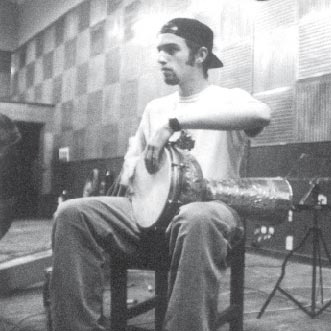
Joachim Cooder
Percussion and drums (Born Santa Monica, USA 1978)Now something of a world music veteran, Joachim Cooder began to play drums at the age of five and studied world percussion at California Institute of the Arts. He was just 18 when he travelled to Havana in 1996 to play on the Buena Vista Social Club™ sessions. “He showed he has a real feel for Cuban music,” according to seasoned timbales player Amadito Valdés, who played alongside him in the percussion section. He has since participated in a wide number of other productions, performances and film scores, and has released a number of solo albums.
Ry Cooder
Guitars (Born Los Angeles, USA 1947)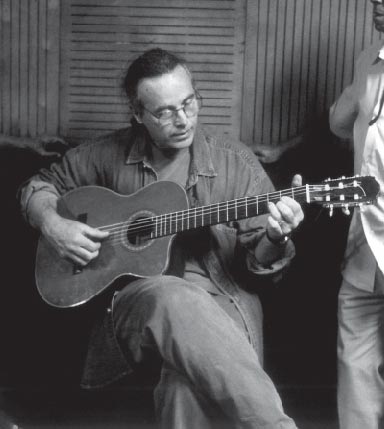
Ry Cooder
Guitars (Born Los Angeles, USA 1947)Ry Cooder has had several fascinating musical careers. As a young guitarist he was a sought-after session player from the mid-1960’s and appeared on records by The Monkees, Captain Beefheart, Little Feat, Randy Newman and the Rolling Stones, who – according to rumour – he almost joined. As a solo performer he made a string of acclaimed and eclectic albums between 1970-87 with strong roots in blues, folk, Tex-Mex and other vernacular American styles. At the same time, he worked as a film composer, scoring more than a dozen films, including Wim Wenders’ classic Paris, Texas (1984). In the 1990s he embarked on a series of Grammy-winning world music collaborations with V.M.Bhatt, Ali Farka Touré and, of course, the Buena Vista Social Club™ and Ibrahim Ferrer.
He continues to work as a prolific musician and producer and released his latest critically acclaimed album ‘The Prodigal Son’ in 2018.
Ibrahim Ferrer
Vocals (Born Santiago de Cuba, Cuba 1927, died 2005)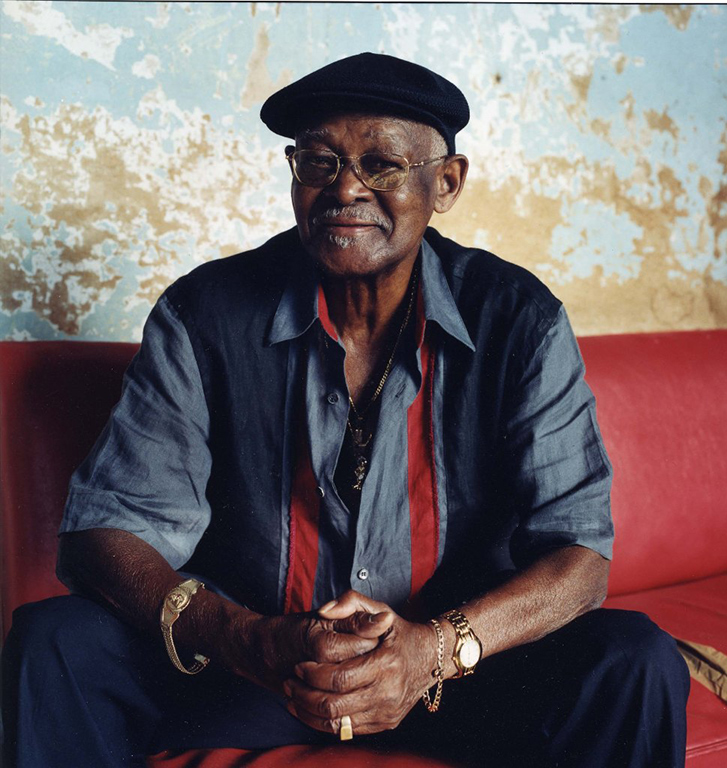
Ibrahim Ferrer
Vocals (Born Santiago de Cuba, Cuba 1927, died 2005)Born at a social club dance, Ibrahim Ferrer always believed it was his destiny to be a singer. Yet although he was the lead vocalist for bandleader Pacho Alonso in the 1950s, sang for the legendary Beny Moré and was lead singer with Los Bocucos, for much of his life his career was a story of disappointment. As a master vocalist in both son and bolero styles, he deserved to have been far better recognised than he was. At the time of the Buena Vista sessions, he was living in retirement, augmenting his pension by shining shoes. Invited to the Buena Vista sessions by Juan de Marcos González when a bolero singer was needed, he swiftly became a pivotal figure in the project. His first solo album, “Buena Vista Social Club Presents™: Ibrahim Ferrer”, was released in 1999. It was followed in 2003 by “Buenos Hermanos” (like its predecessor produced by Ry Cooder), which won him a Grammy. (He was denied entry into the U.S.A. to collect the award). He toured extensively with his own band and that of Rubén González. He died in 2005 just after completing a European tour and his final album, “Mi Sueño” (My Dream), appeared posthumously the following year.
Juan de Marcos González
Band leader and backing vocals (Born Havana, Cuba 1954)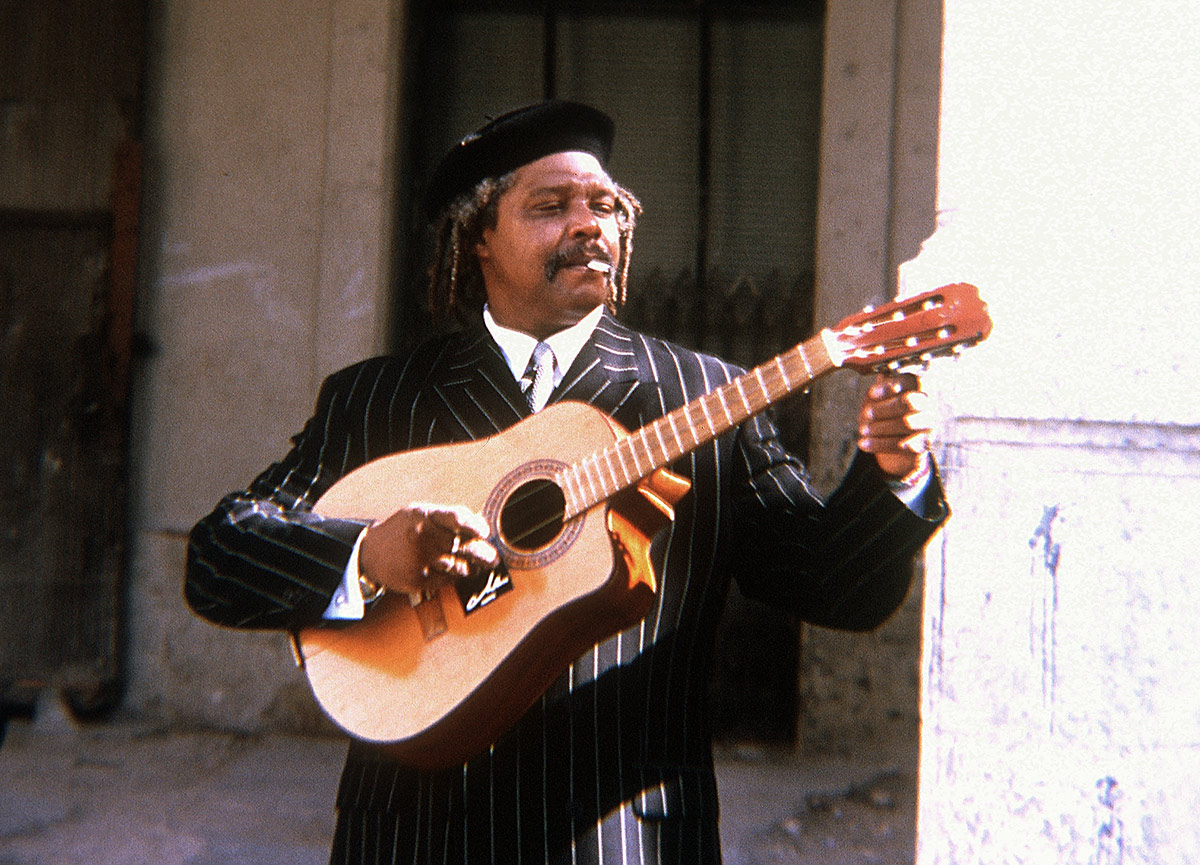
Juan de Marcos González
Band leader and backing vocals (Born Havana, Cuba 1954)One of the driving forces behind the Buena Vista Social Club™, Juan de Marcos González comes from a younger generation than most of its veteran stars, but it’s fair to say that the project could not have happened without him. From a famous musical family (his father sang with the legendary band leader Arsenio Rodríguez), his mission to keep alive the heritage of traditional Cuban music dates back to 1976, when as a young man of 22 he established the band Sierra Maestra. They went on to record 14 albums making their international debut with “Dundunbanza” on World Circuit in 1994. In 1996 he realised a long held ambition to record his Afro Cuban All Stars which included such musicians as Rubén González, Guajiro Mirabal and Pio Leyva. The day after completing that album he worked with Ry Cooder and Nick Gold to assemble the Buena Vista family of musicians. He was band leader for Buena Vista Social Club™’s only concert appearances at Amsterdam’s Carre and New York’s Carnegie Hall theatres. He has recorded further albums with The Afro Cuban All Stars and has led them on extensive tours around the world.
Rubén González
Piano (Born Santa Clara, Cuba 1919, died 2003)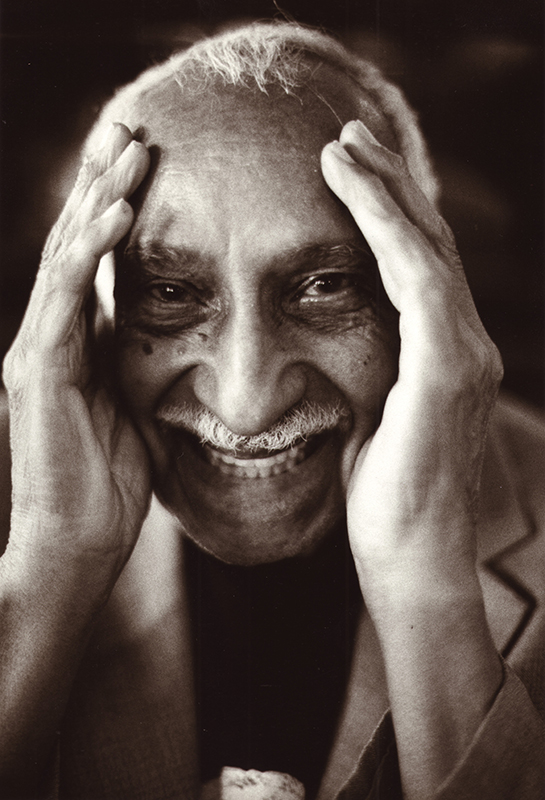
Rubén González
Piano (Born Santa Clara, Cuba 1919, died 2003)Ry Cooder famously likened Rubén González’s piano playing to “a cross between Thelonius Monk and Felix the Cat” and his renaissance in his 80s when he became an international star was one of the great elements in the Buena Vista Social Club™ story. Over a long career dating back to the 1940s, he played with many of the great Cuban bandleaders including Arsenio Rodríguez (in one of the maestro’s first great conjuntos) and Enrique Jorrín (creator of the cha-cha-cha), and Rubén was one of a trio of virtuoso pianists (with Luis ‘Lili’ Martínez and Peruchín) who helped lay the foundation of the modern Cuban piano style. He travelled extensively in Latin America in the 1940s and 1950s and was a major soloist in Havana’s all-star Estrellas de Areito project. By the time Buena Vista Social Club™ was recorded in 1996, he had long retired but he re-emerged not only to grace those sessions but also to record two wonderfully elegant solo albums “Introducing” and “Chanchullo”, and to tour the world’s most prestigious concert stages. He died in 2003, at the age of 84.
Manuel ‘Puntillita’ Licea
Vocals (Born Yareyal, Holguin, Cuba 1927, died 2000)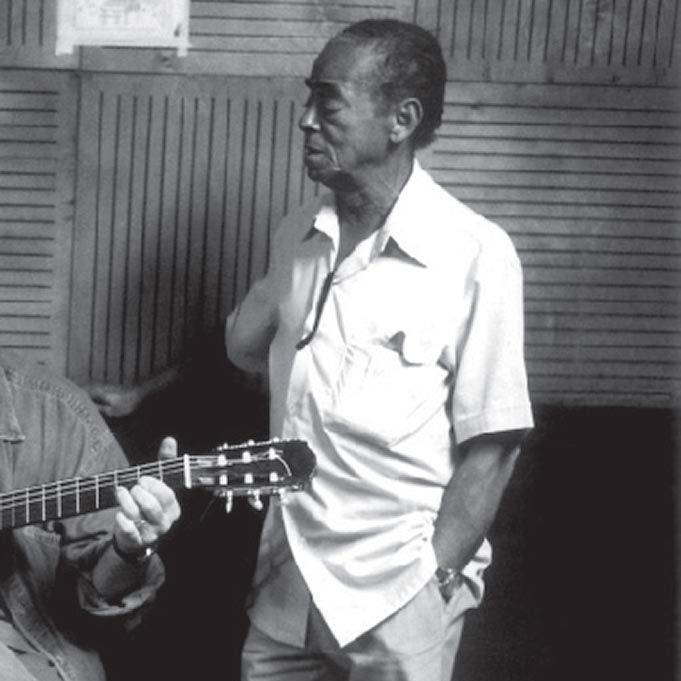
Manuel ‘Puntillita’ Licea
Vocals (Born Yareyal, Holguin, Cuba 1927, died 2000)‘Puntillita’ began singing at the age of seven and joined the ‘Orchestra Liceo’ in 1941. A star of the golden era of the big bands of the 1940s & 1950s, he sang with several of Havana’s finest orchestras, including those led by Adolfo Guzman, Roberto Faz and Cascarito. He also sang with the legendary Sonara Matancera (with whom Celia Cruz also once sang). In the mid-1990s Juan de Marcos González asked him to join the Afro-Cuban All Stars and he also appeared on Buena Vista Social Club™, taking the lead vocal on La Bayamesa and singing with Ibrahim Ferrer and Eliades Ochoa on El Cuarta De Tula. He died in 2000 at the age of 73.
Orlando ‘Cachaíto’ López
Bass (Born Havana, Cuba 1933, died 2009)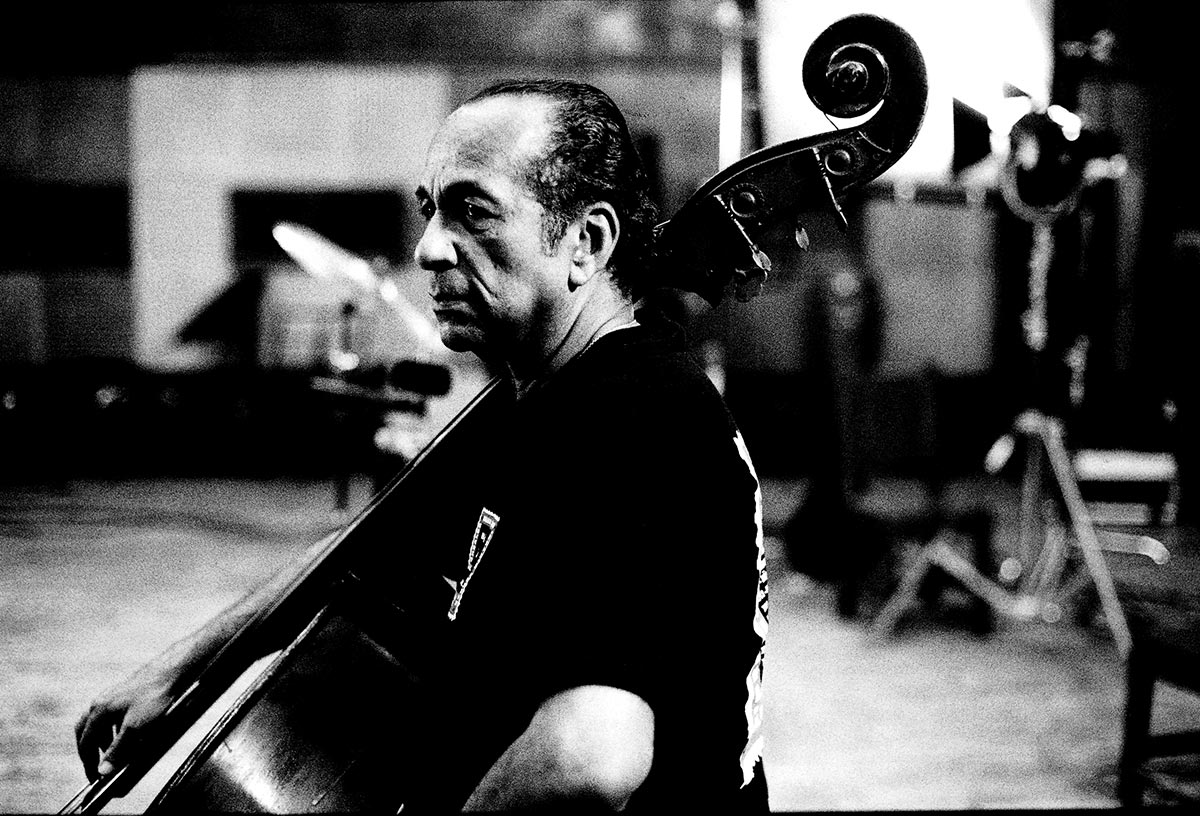
Orlando ‘Cachaíto’ López
Bass (Born Havana, Cuba 1933, died 2009)The heartbeat of the Buena Vista Social Club™ with his fluid, virtuoso bass playing, Orlando ‘Cachaíto’ López hailed from a family of influential Cuban bass players: his uncle, Israel (a.k.a. Cachao) together with his father Orestes (a.k.a. Macho) created the mambo with members of Arcano’s group in the 1940’s. His uncle Cachao also played a crucial role in the development of the improvisational Afro-Cuban jazz style known as descarga of which Cachaíto was a master. An amazingly versatile musician, Cachaíto played classical music with Cuba’s Orquesta Sinfónica Nacional, Cuban jazz and pop with Irakeke, doo wop with Los Zafiros and descarga with Los Amigos . His warm presence can be heard on all but one of the 14 tracks on the original Buena Vista Social Club studio album and he has since been a fixture on virtually all of the associated tours and recording sessions. His own experimental World Circuit album “Cachaíto” (2001) is regarded by many critics as one of the finest releases in the Buena Vista series. Cachaíto was the bedrock of Ibrahim Ferrer’s and Rubén González’s bands and in his last years he kept the groove in the Orquesta Buena Vista Social Club™. He died in Havana in 2009, at the age of 76.
Manuel ‘Guajiro’ Mirabal
Trumpet (Born Melena del Sur, Cuba 1933)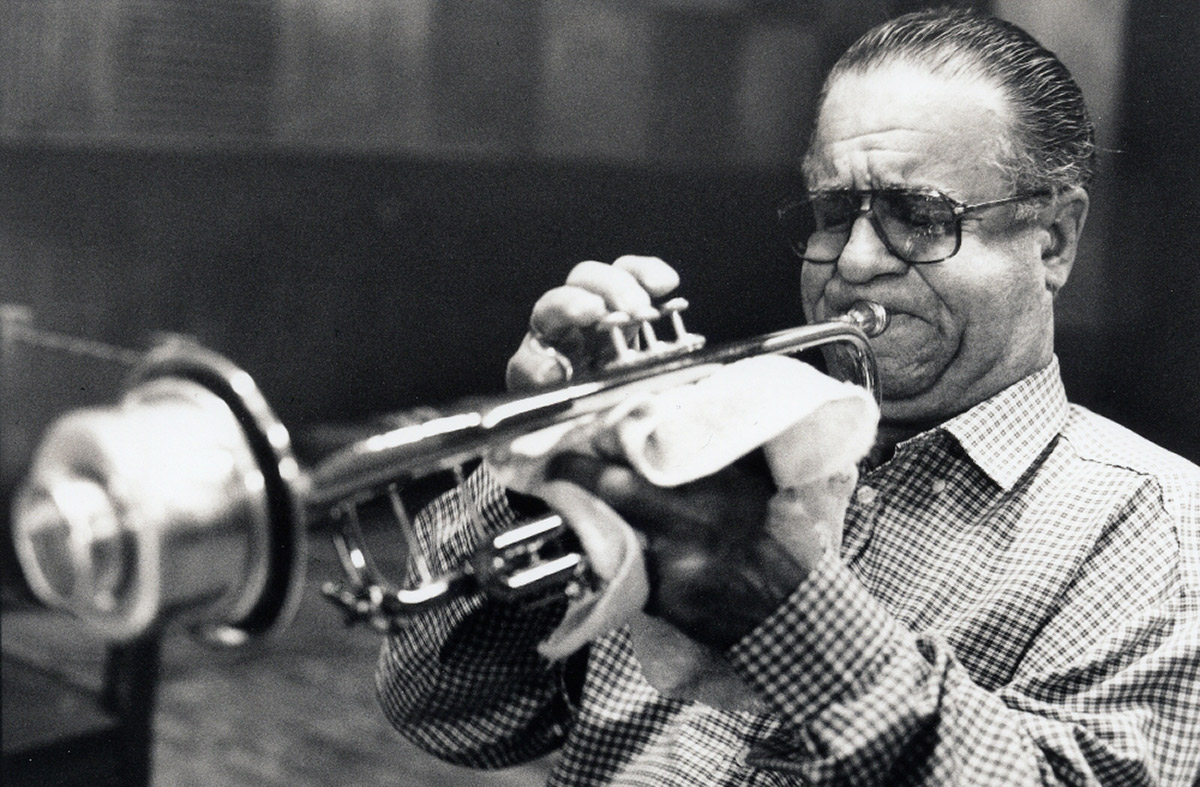
Manuel ‘Guajiro’ Mirabal
Trumpet (Born Melena del Sur, Cuba 1933)A professional trumpet player for almost 60 years, Mirabal joined the Cuban jazz band ‘Swing Casino’ in 1953. Three years later he formed the ‘Conjunto Rumbavana’ and in 1960 he joined the Orquesta Riverside, whose singer Tito Gomez gave him his nickname ‘Guajiro’. He also played with a variety of other top bands, including Orquesta del ICRT the official orchestra of Cuban state radio and television. In 1996 he became a key member of the extended Buena Vista Social Club™ family, playing on all three albums recorded over that extraordinary fortnight in Havana. His vibrant trumpet playing has since been heard on many of World Circuit’s Cuban releases and his own 2004 album, Buena Vista Social Club™ Presents Manuel Guajiro Mirabal, found him paying tribute to the music of Cuban legend Arsenio Rodriguez.
Eliades Ochoa
Guitar and vocals (Born Songo la Maya, Cuba 1946)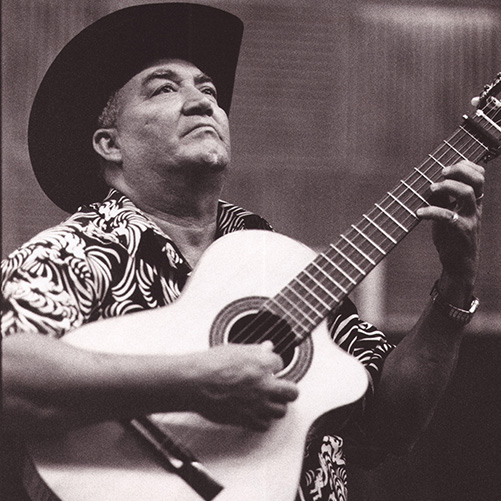
Eliades Ochoa
Guitar and vocals (Born Songo la Maya, Cuba 1946)Hailing from the countryside near Santiago in the east of Cuba, Eliades Ochoa’s roots are in guajira (Cuban country music) and his trademark cowboy hat and penchant for wearing black have led some to dub him ‘Cuba’s Johnny Cash’. He began playing the guitar when he was six, making a living playing in the cafes and brothels around Santiago. Such was his local reputation that in 1978 he joined Cuarteto Patria, becoming the leader of the legendary group that has been keeping the tradition of Cuban folk music alive since 1940. Not long before he was recruited for the Buena Vista album he had been working with Compay Segundo, reviving the master’s career and recording the first version of Chan Chan with him. His contribution to the Buena Vista Social Club™ sessions included his distinctive guitar playing and his lead vocals on El Cuarto de Tula and his own guajira showcase on El Carretero. Away from the Buena Vista connection, he recorded the 1998 album CubAfrica with Manu Dibango and several solo releases, including 1999’s Sublime Ilusión, and Estoy Como Nunca in 2002. He continues to tour and release music regularly.
Omara Portuondo
Vocals (Born Havana, Cuba 1930)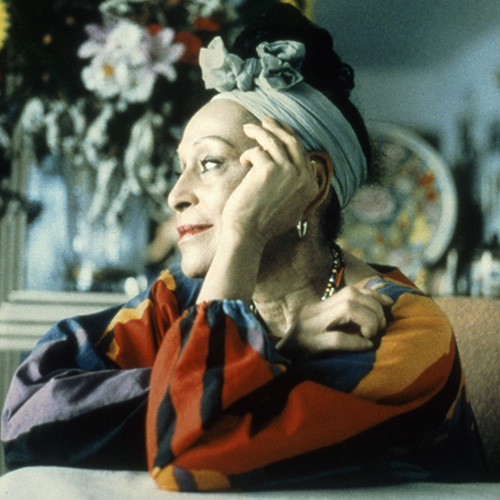
Omara Portuondo
Vocals (Born Havana, Cuba 1930)Buena Vista Social Club™’s leading lady Omara Portuondo began her career not as a singer but as a dancer at the fabled Tropicana cabaret in Havana. In 1952 she and her older sister, Haydee teamed up with Elena Burke and Moraima Secada to form the vocal group Cuarteto D’Aida, backed by the pianist Aida Diestro. The group toured America, performed with Nat King Cole at the Tropicana and recorded an album for RCA Victor before the revolution put an end to such possibilities, although she continued to sing with the group until 1967 when she launched a solo career. She achieved great success in Cuba as a leading voice in the ‘feelin’ style. When a female voice was required for the Buena Vista sessions in 1996, she was the perfect choice, collaborating memorably with Compay Segundo on Veinte Años. Subsequently her duet with Ibrahim Ferrer on Silencio became a highlight of Wim Wenders’s documentary and the Buena Vista live shows. She has since recorded two albums for World Circuit with Buena Vista Social Club™ Presents Omara Portuondo (2000) and Flor de Amor (2004). Omara continues to release music and to tour globally.
Compay Segundo
Vocals and guitar (Born Siboney, Cuba 1907, died 2003)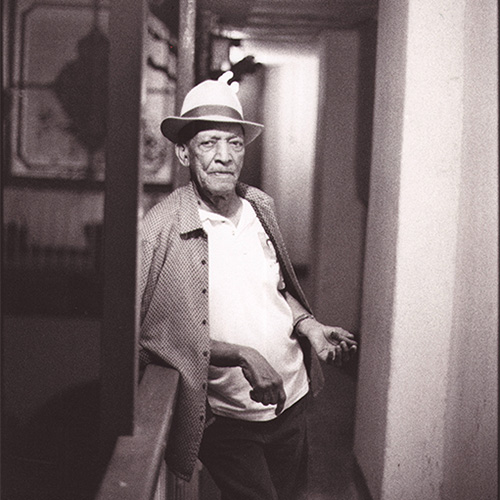
Compay Segundo
Vocals and guitar (Born Siboney, Cuba 1907, died 2003)A towering, charismatic presence in Afro-Cuban music, Compay Segundo was quite simply – as Ry Cooder once put it -“the last of the best’. Born Francisco Repilado, he composed his first song at the age of fifteen, by which time he was already an accomplished guitarist and clarinettist. Before long he had invented his own instrument, the armónico, a seven-string hybrid between a guitar and a tres, which gave his playing the unique, ringing resonance which was later to characterise his thrilling signature tune, Chan Chan. During the 1920s and 1930s he played with some of the best bands of the era, including the Municipal Band of Havana, Conjunto Matamoros and Nico Saquito’s quintet. In the 1940s he found fame as one half of the Los Compadres duo with Lorenzo Hierrezuelo, before forming his own group, Compay Segundo and his Muchachos, in the 1950s. Both an innovator and a traditionalist, he continued working with his own group until his death in 2003 at the grand old age of 95.
Barbarito Torres
Laúd (Born Matanzas, Cuba 1956)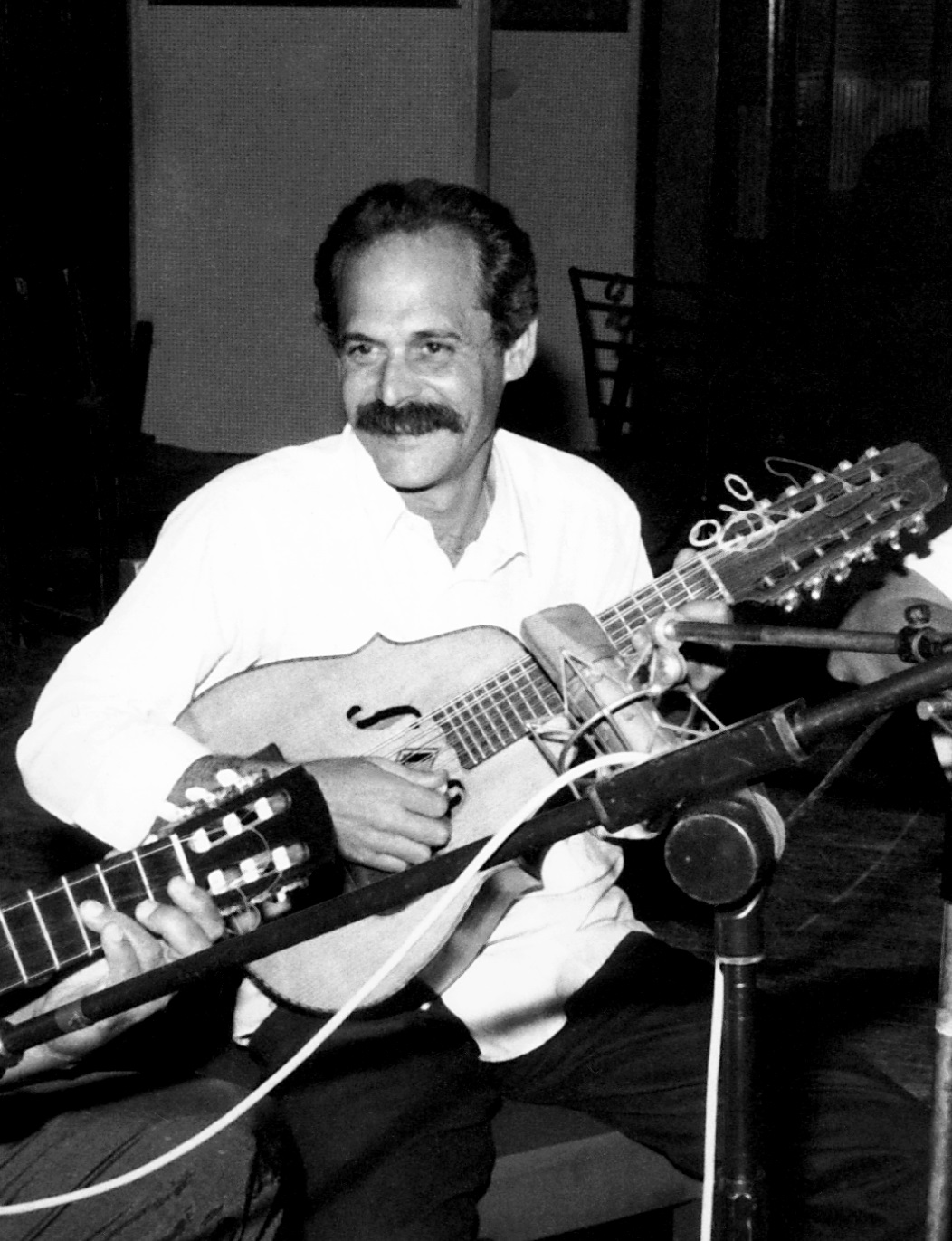
Barbarito Torres
Laúd (Born Matanzas, Cuba 1956)The laúd playing of Barbarito Torres provided one of the most unforgettable moments on the Buena Vista Social Club album when, during the recording of his solo in El Cuarto de Tula, he attacked his instrument so fiercely that Eliades Ochoa is prompted to exclaim: “¡Se volvió loco Barbarito!” (Barbarito has gone mad!). Torres played in a series of military bands during the 1970s, before settling in Havana and becoming a permanent member of Orquesta Cubana de Cuerdas. He became musical director for Celina Gonzalez’s Grupo Campoalegre and worked with many of the biggest names in Cuban music as well as international stars such as Oscar de León. He has also played with the Afro-Cuban All Stars and his solo album Havana Café featured guest appearances by Ibrahim Ferrer and Omara Portuondo. He has released four solo albums and is revered as a great maestro of Cuban music.
Alberto ‘Virgilio’ Valdés
Maracas and backing vocals (born Havana, Cuba 1953)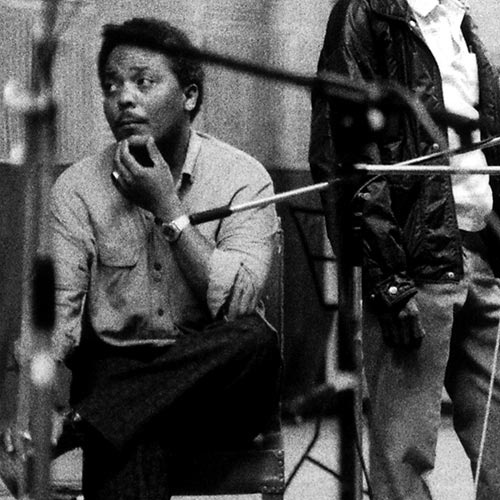
Alberto ‘Virgilio’ Valdés
Maracas and backing vocals (born Havana, Cuba 1953)A founding member of the group Sierra Maestra in 1976, Alberto ‘Virgilio’ Valdés was brought into the Buena Vista fold by his former colleague in Sierra Maestra, Juan de Marcos González. Sierra Maestra were the first group of the modern era to play in the old 1920-30s style son line-up: tres, guitar, trumpet, bongo, güiro and vocal. They were the pioneers in reviving this style for new generations, reintroducing it into the Cuban mainstream, and playing for audiences around the world. Virgilio is number one choice in Havana as a session player on maracas and as a coro singer, and he has featured on all of World Circuit’s Havana recordings.